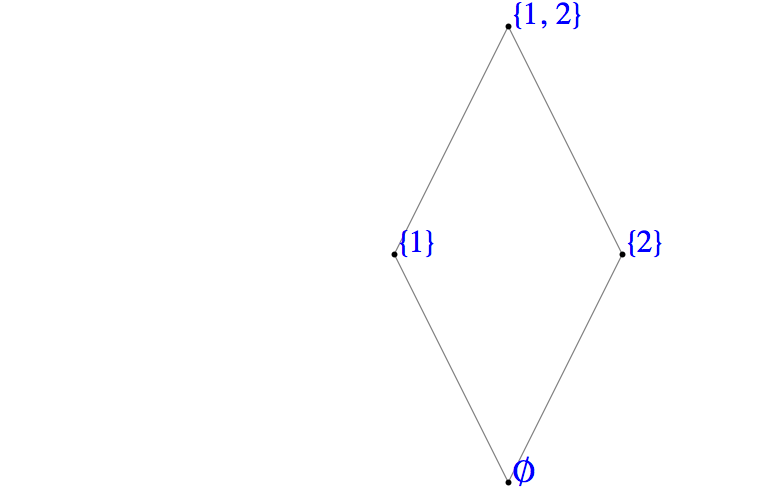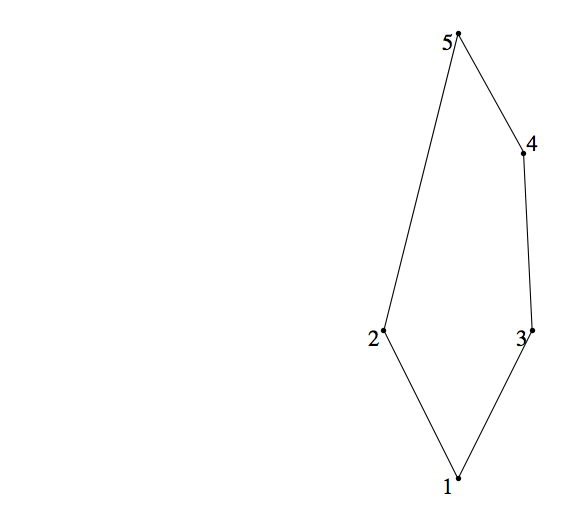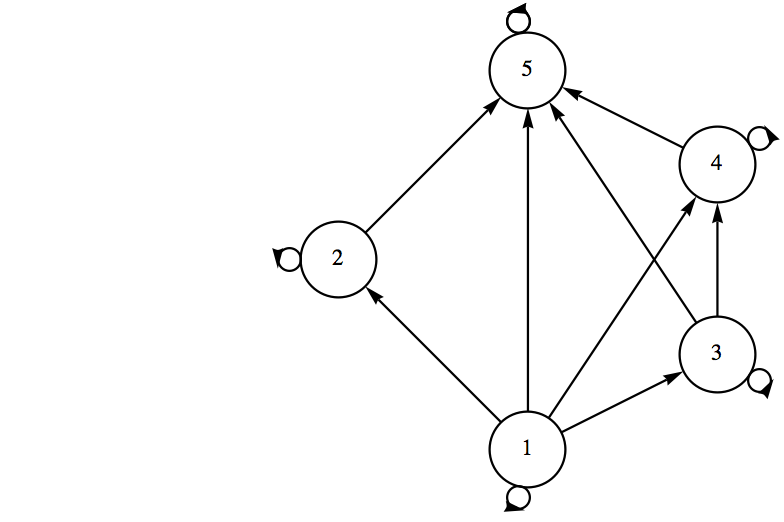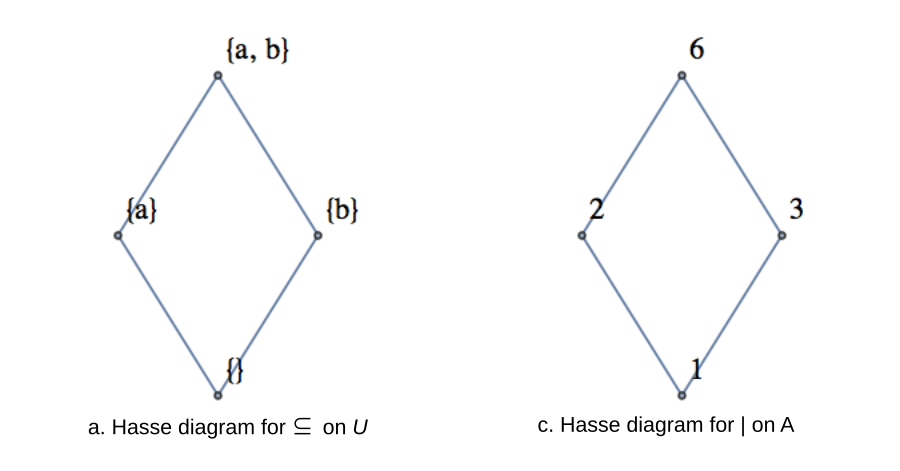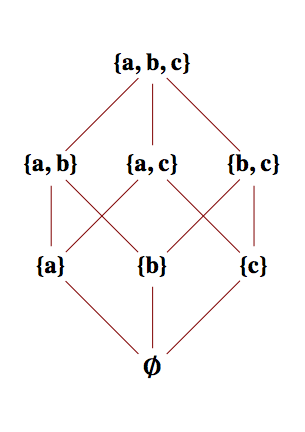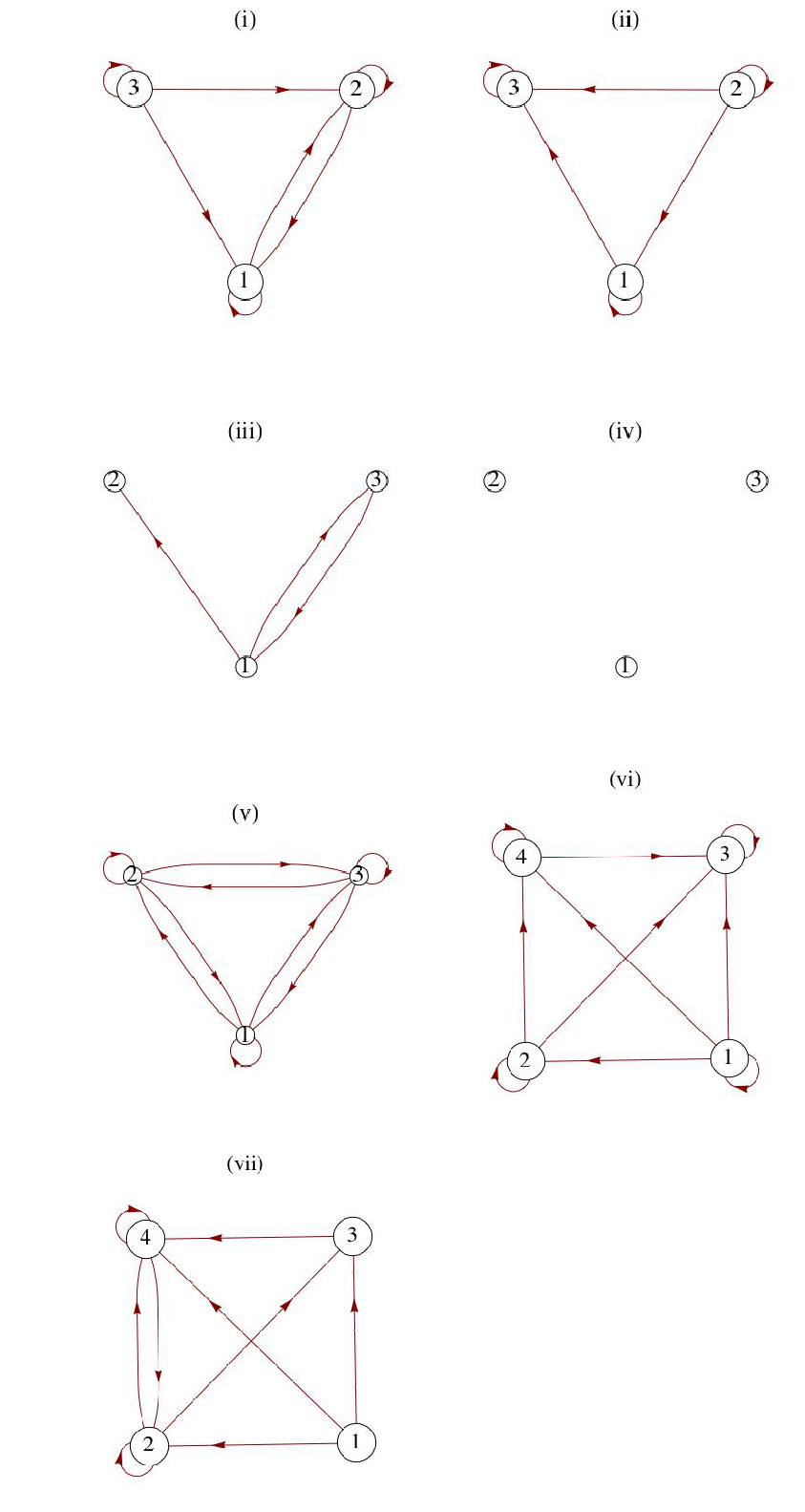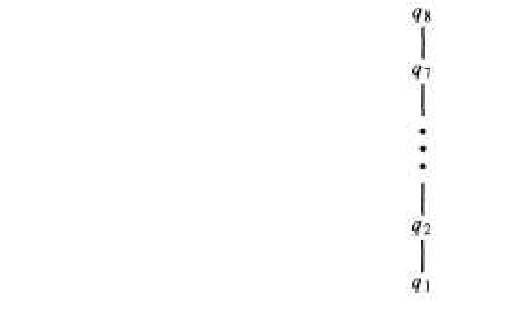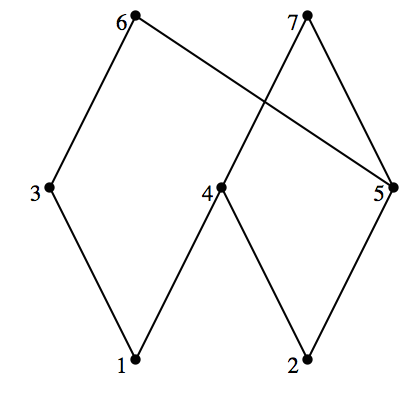How do we read this diagram? What is \(A\text{?}\) What is \(R\text{?}\) What does the digraph of \(R\) look like? Certainly \(A = \{1,2,3,4,5\}\) and \(1 R 2\text{,}\) \(3 R 4\text{,}\) \(1 R 4\text{,}\) \(1 R 5\text{,}\) etc., Notice that \(1 R 5\) is implied by the fact that there is a path of length three upward from 1 to 5. This follows from the edges that are shown and the transitive property that is presumed in a poset. Since \(1 R 3\) and \(3 R
4\text{,}\) we know that \(1 R 4\text{.}\) We then combine \(1 R 4\) with \(4 R 5\) to infer \(1 R 5\text{.}\) Without going into details why, here is a complete list of pairs defined by \(R\text{.}\)
\begin{equation*}
R = \{(1,1),(2,2),(3,3),(4,4),(5,5),(1,3),\\
(1,4),(1,5),(1,2),(3,4),(3,5),(4,5),(2,5)\}
\end{equation*}
